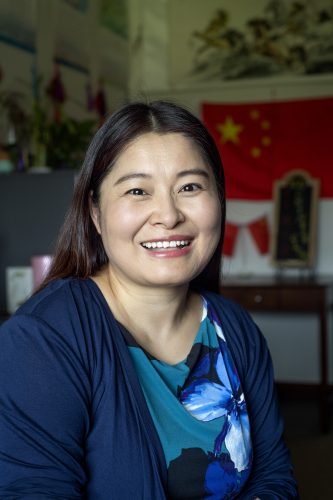From the Spring 2019 issue of TCU Magazine

Illustration by Getty Images ©MRPLISKIN
Nihao. Hello.
An exchange of greetings across languages should be a simple matter. But when spoken in different cultural contexts, nihao and hello have different meanings.
One language cannot be seamlessly translated into another because culture is entwined with every syllable, and “culture is invisible,” said Guangyan Chen, assistant professor of Chinese.
Chen was teaching American students in China in the 1990s when she realized her students were perceiving a different kind of society than she was. Her teaching style wasn’t resolving the issue, either. Traditional language instruction, which centers on grammar and vocabulary, could not bridge the gap between the cultures.
Nowadays, Chen advocates for a performed-culture approach to language instruction, where context is key to every interaction. She is writing a book about the pedagogical paradigm shift in which she explains how to approach the nuances lacking in the traditional language instruction.

Guangyan Chen was teaching Chinese as a foreign language in her native China when she noticed her American students didn’t have a basic understanding of Chinese culture. Photo by Jeffrey McWhorter
To illustrate: In Chinese,nihao would be used only to request a stranger’s attention, such as when asking for help, Chen said. Saying nihao to an unfamiliar person as a simple greeting would make a speaker fall in the category of “weird.”
China is a far different country from the U.S., Chen said. A large part of the reason is a divergent emphasis on “collectivist culture versus individualist culture.”
In China, the group is everything. “You have to perform according to the group goal,” Chen said. “Keep the harmony within the group — that is the goal. And [it’s] more important than your personal goal.”
Hence, Americans who are used to pushing their individual opinions and ways of doing business would be better served using language to fit into Chinese culture.